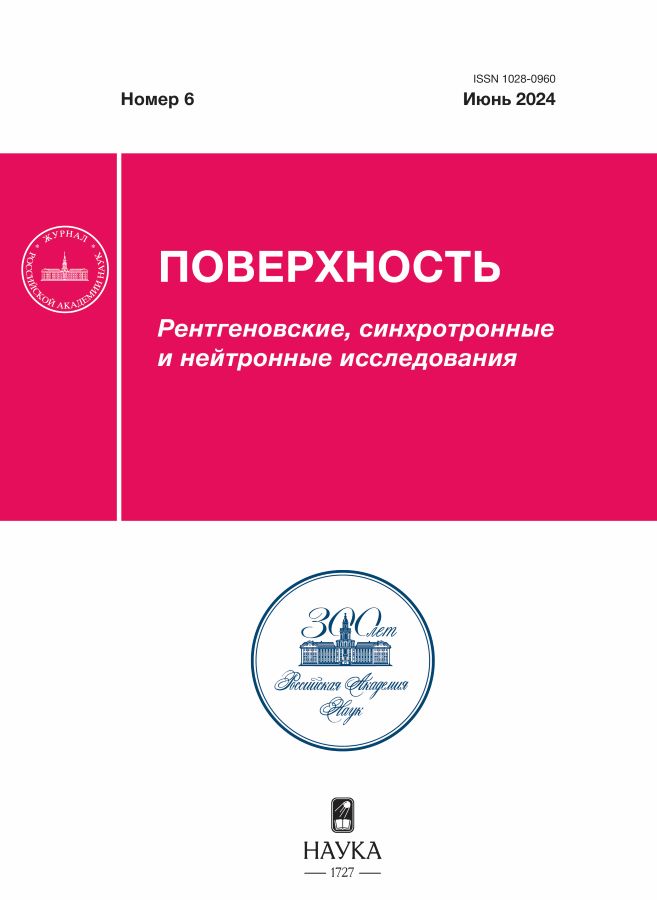Accumulation and Erase of Radiation-Induced Charge in MOS Structures
- Авторлар: Andreev D.V.1
-
Мекемелер:
- Bauman Moscow State Technical University, Kaluga Branch
- Шығарылым: № 6 (2024)
- Беттер: 93-98
- Бөлім: Articles
- URL: https://jdigitaldiagnostics.com/1028-0960/article/view/664814
- DOI: https://doi.org/10.31857/S1028096024060137
- EDN: https://elibrary.ru/DUFDFC
- ID: 664814
Дәйексөз келтіру
Аннотация
It is shown that when a MOS (metal–oxide–semiconductor) structure is simultaneously exposed to radiation and high-field injection of electrons, part of the radiation-induced positive charge can be erased when interacting with injected electrons, and the density of surface states can increase. These phenomena must be taken into account when operating MOS radiation sensors in high-field charge injection modes. High-field injection modes used for post-radiation erase of positive charge in MOS sensors are analyzed. It has been established that to annihilate one hole (radiation-induced positive charge), it is necessary to inject (0.5–2) × 104 electrons into the gate dielectric; the magnitude of the electric field has almost no effect on the process of erasing the radiation-induced charge.
Негізгі сөздер
Авторлар туралы
D. Andreev
Bauman Moscow State Technical University, Kaluga Branch
Хат алмасуға жауапты Автор.
Email: dmitrii_andreev@bmstu.ru
Ресей, Kaluga
Әдебиет тізімі
- Holmes-Siedle A., Adams L. // Radiat. Phys. Chem. 1986. V. 28. P. 235. https://doi.org/10.1016/1359-0197(86)90134-7
- Pejović M.M. // Radiat. Phys. Chem. 2017. V. 130. P. 221. https://doi.org/10.1016/j.radphyschem.2016.08.027
- Ristic G.S., Vasovic N.D., Kovacevic M., Jaksic A.B. // Nucl. Instrum. Methods Phys. Res. B. 2011. V. 269. P. 2703. https://doi.org/ 10.1016/j.nimb.2011.08.015
- Lipovetzky J., Holmes–Siedle A., Inza M.G., Carbonetto S., Redin E., Faigon A. // IEEE Trans. Nucl. Sci. 2012. V. 59. P. 3133. https://doi.org/10.1109/TNS.2012.2222667
- Ristic G.S., Ilic S.D., Andjelkovic M.S., Duane R., Palma A.J., Lalena A.M., Krstic M.D., Jaksic A.B. // Nucl. Instrum. Methods Phys. Res. A. 2022. V. 1029. P. 166473. https://doi.org/10.1016/j.nima.2022.166473
- Siebel O.F., Pereira J.G., Souza R.S., Ramirez-Fernandez F.J., Schneider M.C., Galup-Montoro C. // Radiat. Meas. 2015. V. 75. P. 53. https://doi.org/ 10.1016/j.radmeas.2015.03.004
- Kulhar M., Dhoot K., Pandya A. // IEEE Trans. Nucl. Sci. 2019. V. 66. P. 2220. https://doi.org/ 10.1109/TNS.2019.2942955
- Camanzi B., Holmes-Siedle A.G. // Nature Mater. 2008. V. 7. P. 343. https://doi.org/10.1038/nmat2159
- Oldham T.R., McLean F.B. // IEEE Trans. Nucl. Sci. 2003. V. 50. P. 483. https://doi.org/10.1109/TNS.2003.812927
- Schwank J.R., Shaneyfelt M.R., Fleetwood D.M., Felix J.A., Dodd P.E., Paillet P., Ferlet-Cavrois V. // IEEE Trans. Nucl. Sci. 2008. V. 55. P. 1833. https://doi.org/10.1109/TNS.2008.2001040
- Andreev D.V., Bondarenko G.G., Andreev V.V., Stolya-rov A.A. // Sensors. 2020. V. 20. P. 2382. https://doi.org/10.3390/s20082382
- Andreev V.V., Maslovsky V.M., Andreev D.V., Stolyarov A.A. // Proc. SPIE. 2019. V. 11022. P. 1102207. https://doi.org/10.1117/12.2521985
- Andreev V.V., Bondarenko G.G., Andreev D.V., Stolyarov A.A. // J. Contemp. Phys. (Armenian Acad. Sci.). 2020. V. 55. P. 144. https://doi.org/10.3103/S106833722002005X
- Andreev D.V., Bondarenko G.G., Andreev V.V., Maslovsky V.M., Stolyarov A.A. // J. Surf. Invest.: X-ray, Synchrotron Neutron Tech. 2020. V. 14. P. 260. https://doi.org/10.1134/S1027451020020196
- Andreev D.V., Bondarenko G.G., Andreev V.V. // J. Surf. Invest.: X-ray, Synchrotron Neutron Tech. 2023. V. 17. P. 48. https://doi.org/10.1134/S1027451023010056
- Lipovetzky J., Redin E.G., Faigon A. // IEEE Trans. Nucl. Sci. 2007. V. 54. P. 1244. https://doi.org/10.1109/TNS.2007.895122
- Peng L., Hu D., Jia Y., Wu Y., An P., Jia G. // IEEE Trans. Nucl. Sci. 2017. V. 64. P. 2633. https://doi.org/10.1109/TNS.2017.2744679
- Strong A.W., Wu E.Y., Vollertsen R., Sune J., Rosa G.L., Rauch S.E., Sullivan T.D. Reliability Wearout Mechanisms in Advanced CMOS Technologies. Wiley-IEEE Press, 2009. 624 p.
- Palumbo F., Wen C., Lombardo S., Pazos S., Aguirre F., Eizenberg M., Hui F., Lanza M. // Adv. Funct. Mater. 2019. V. 29. P. 1900657. https://doi.org/10.1002/adfm.201900657
- Wu E.Y. // IEEE Trans. Electron Devices. 2019. V. 66. P. 4523. https://doi.org/10.1109/TED.2019.2933612
- Andreev V.V., Bondarenko G.G., Maslovsky V.M., Stolyarov A.A., Andreev D.V. // Phys. Stat. Sol. C. 2015. V. 12. P. 299. https://doi.org/10.1002/pssc.201400119
- Andreev D.V., Maslovsky V.M., Andreev V.V., Stolyarov A.A. // Phys. Stat. Sol. A. 2022. V. 219. P. 2100400. https://doi.org/10.1002/pssa.202100400
- Arnold D., Cartier E., DiMaria D.J. // Phys. Rev. B. 1994. V. 49. P. 10278. https://doi.org/10.1103/PhysRevB.49.10278
- Lai S.K. // J. Appl. Phys. 1983. V. 54. P. 2540. https://doi.org/10.1063/1.332323
- Cerbu F., Madia O., Andreev D.V., Fadida S., Eizenberg M., Breuil L., Lisoni J.G., Kittl J.A., Strand J., Shluger A.L., Afanas'ev V.V., Houssa M., Stesmans A. // Appl. Phys. Lett. 2016. V. 108. P. 222901. https://doi.org/10.1063/1.495271
- Fleetwood D.M. // IEEE Trans. Nucl. Sci. 2020. V. 67. P. 1216. https://doi.org/10.1109/TNS.2020.2971861
- Zebrev G.I., Orlov V.V., Gorbunov M.S., Drosdetsky M.G. // Microelectron. Reliab. 2018. V. 84. P. 181. https://doi.org/10.1016/j.microrel.2018.03.014
Қосымша файлдар









